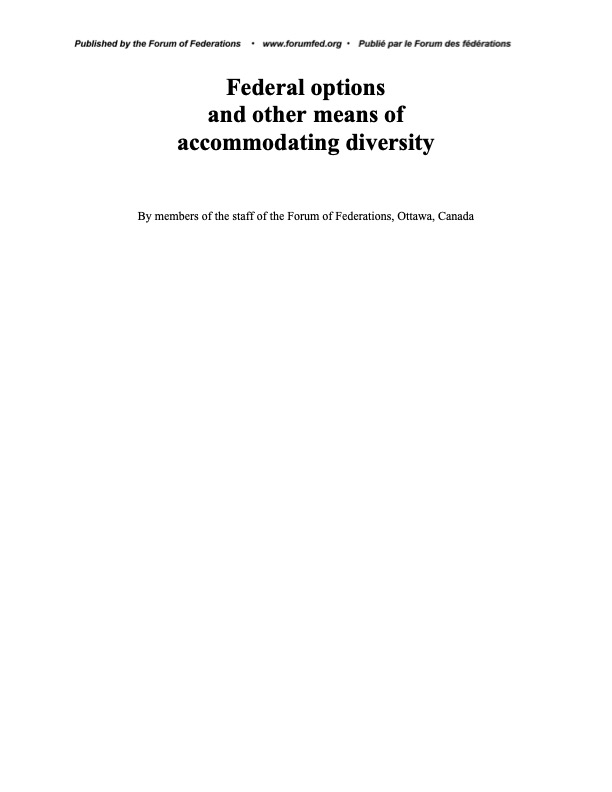
Federal Options and Other Means of Accommodating Diversity
This paper is aimed at assisting persons engaged in nation-building, particularly in post-conflict states. Specifically it is meant to provide insight and examples into the ways and means of recognizing and accommodating multiple national groups living in a specific country. The paper highlights the ways in which ethnic diversity may present itself and the possibility of various groups not being geographically concentrated. The paper then canvasses the variety of means a country can use to address diversity, including: minority language and cultural rights, assimilation, exclusion and integration, and devolution. The last part of the paper looks at federalism in detail and how it accommodates diversity. Specifically, the paper highlights the characteristics of federal constitutions, basic features and division of roles and responsibilities between orders of government, areas of cooperation between orders of government, representation of constituent units at the federal level, the guarantee of rights for minorities, the utility of asymmetrical federalism, the possibility of secessionism, and the use of a neutral referee (i.e. the courts) to resolve any disagreement. The paper ends with a series of questions to be asked when considering how to craft institutions to accommodate ethnic diversity.
